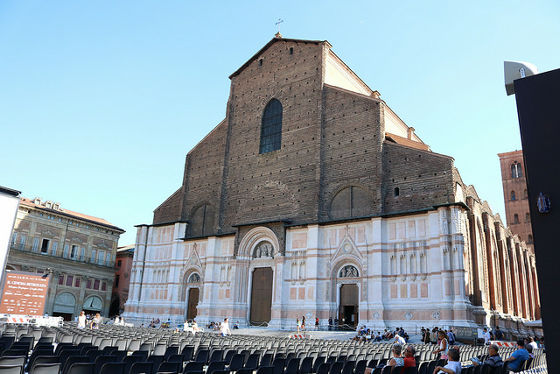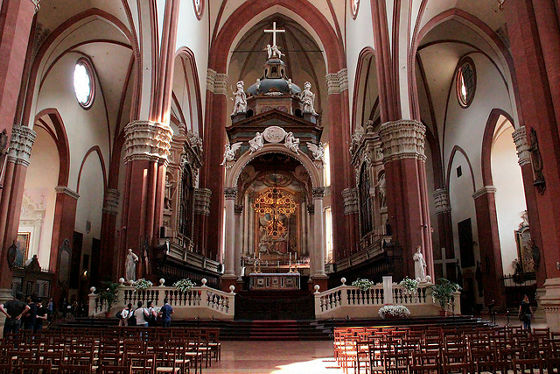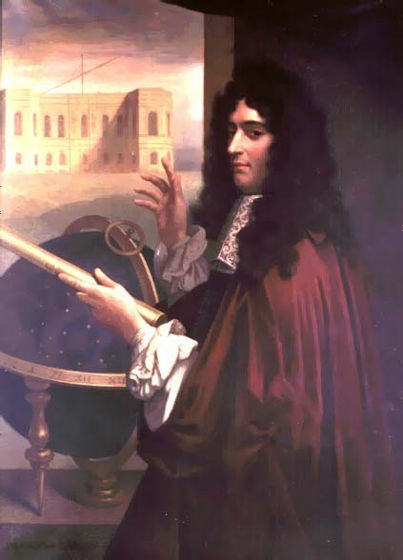What is the unexpected relationship of "science and religion" engraved in the medieval European church?

ByJessica Spengler
The idea that the concept of "religion" exists in the contrary to the concept of "science" can be said to be widely accepted, but in fact it is also true that these two have been tightly involved since long ago. As religion and science are more likely to repel like water and oil, but also in the medieval church of Christianity evidence that there was science in religion literally "carved "is.
Why Catholics Built Secret Astronomical Features Into Churches to Help Save Souls | Atlas Obscura
http://www.atlasobscura.com/articles/catholics-built-secret-astronomical-features-into-churches-to-help-save-souls
The first thing you can imagine when you hear "a conflict between religion and science" is an episode on which one of the confrontation between the theory of the theory and the theory of the ground, ie, "the sun is orbiting the earth, or the earth is going around the sun" It can be said. Of course, in the 16th century Christian Catholic church convicted Galileo Galilei for its interpretationGalileo trialAlthough it is famous, in fact this confrontation is said to be an episode which was exaggerated in the later era, in fact it is thought that there was close connection with the Catholic church and science.
One clue to show such a thing is engraved on the floor of "San Petronio Cathedral" in Bologna, Italy. San Petronio Cathedral is the fourth largest cathedral in Italy, its size is 132 m in length and 66 m in width. It seems that the total population of Bologna at the time of construction was about 3000 people in size.

ByKatieThebeau
Although it is a majestic structure of course, it is said that it is not a cross-shaped structure which is common in church. The reason is that the budget for construction has been canceled. It was San Petronio Cathedral which began construction in 1390 and has undergone a number of construction interruption but it was settled in 1663 as a result of continued construction continued by the papacy later.

ByGio.april
One such straight line is engraved on the floor of such a cathedral. Grooves are carved on the marble laid on the floor, and by burying a brass plate in it, it is made to be able to withstand many years as well.

The identity of this groove is determined by the position of the sun's light coming through a small hole drilled in the roof,MeridianWhat is called. Although the height (angle) of the sun changes according to the season, the meridian uses the phenomenon to record the position where light is inserted at midday so that you can know the exact date. In other words, it can be called a natural calendar using sunlight.
It was the 17th century astronomer who designed this meridian,Giovanni Domenico CassiniThat was. Although I think that there are people who think of Cassini and the names of NASA's Saturn probe and asteroids, Giovanni Cassini is the person who got that name. Cassini born in Italy taught astronomy at the University of Bologna and then served as the first president of the Paris Observatory. Naturalized in France later renamed Jean Dominic Cassini, the descendants of Cassini served as the director of the Paris Observatory for four generations.

The meridian of San Petronio Cathedral was first established in 1575 by craftsmen and Dominico's writer Egnazio Danti. After that, when the church is expanded it will be rebuilt and Cassini's meridian will be set up. The meridian is engraved diagonally across the floor of the cathedral.

And, by the number inscribed next to the groove, I am getting to know "what day of the year is today".

ByJessica Spengler
In other words, the Cathedral of Saint Petrónio is a gigantic "sun observation facility", from which we can see the connection between science and religion. As mentioned earlier, "Galileo trial" is said to be somewhat exaggerated as the most famous episode, but in reality it was said that the meridian was utilized in religious events in the church at the time. "Easter", one of the important events of Christianity, is a festival to remember and remember that Jesus Christ was resurrected three days after being crucified and died, but that day is astronomical It is also prescribed based on.
The date was held in 325 ADFirst Nicene CouncilIt is said to be "next Sunday after the first full moon after the vernal equinox day", and it is not simply "o month o day" and the date is specified. Therefore, it is said that it is important to obtain the date accurately in the church.
Actually watching the movement of the sun on the meridian, the sun's light reaches the ends of the meridian on the day of summer solstice and winter solstice. And as the sun goes through it, the light of the sun moves the meridian towards the other end. And the middle part of that meridian is the "spring equinox and autumnal equinox day" where the length of day and night will be together, and Christians will wait for the next full moon day when they know that the spring equinox has come, Then we will hold an Easter festival on the first Sunday after that. The book written by Cassini depicts a meridian figure, and you can see how the sun's light was taken from the daylight window.

In addition to the Basilica of Saint Petrónio, the meridian is the Cathedral of Florence in Italy, the French and ParisianSaint-Sulpice ChurchIt is said that it is also installed in. From the observation using the meridian it is also made clear that the year is not "365 days" but "about 365.24 days". If you visit these cathedrals and churches, it may be interesting to try to think that the people of hundreds of years ago had elucidated the movement of the earth using science.
Related Posts:







